After several trips and plenty of adventures in the Verdon Gorge, I’ve realized summer is by far the most popular season—especially if you want to kayak, swim, or hike under the Provence sun. The days stretch on, the weather feels warm, and that turquoise water? It’s just begging you to dive in.
But honestly, summer brings crowds and busy roads, especially around Lac de Sainte-Croix. You can’t have it all, I guess.
On quieter spring and autumn days, the gorge transforms. I notice more space to soak in those wild cliffs and winding trails, and the roads calm down—a relief if you hate traffic jams.
Water levels and weather totally change the vibe, so before I plan a trip, I always ask myself what I want most out of it.
If you’re picturing kayaking through crystal water, cliff jumping, or just a lazy picnic surrounded by Provence’s landscape, timing your visit matters a lot.

I put this guide together to help you pick the best season for your own Verdon Gorge trip—weather, activities, and maybe even a few peaceful moments away from the crowds.
When Is the Best Time to Visit Verdon Gorge?
The Verdon Gorge feels special in every season, but not every month brings the same warm weather, water levels, or outdoor fun.
I’ve waited for the perfect conditions and compared the energy between Provence’s buzzing summer and the quieter months.
Understanding Seasonal Differences
When I plan a Verdon Gorge trip, the season is the biggest thing on my mind.
Summer (June to August) brings warm, sunny weather, clear skies, and long days. It’s ideal for swimming, kayaking, and exploring those dramatic turquoise waters.
Spring and autumn (April-May and September-October) offer milder temps. Spring means green landscapes and wildflowers everywhere; autumn feels quieter and the foliage is gorgeous.
Some attractions or rentals run shorter hours off-season, but the region empties out a bit, which I love.
Winter is the quietest. The air chills, tourists vanish, and most water activities close up shop.
Hiking is still possible if it’s dry, and the villages feel way more relaxed. The gorge itself can seem a little lonely, but there’s a certain peace to that.
Comparing Peak and Off-Peak Adventures
Summer is peak season in Gorges du Verdon. All the activities—paddle boats, rafting, boat rentals—run at full tilt. Swimming is safe, and water levels hit their high.
There’s a real buzz in the air, but it gets crowded fast, and parking turns into a headache.
Off-peak seasons have their own magic. In spring and autumn, I find loads more space for hiking, biking, or a picnic without the summertime stampede.
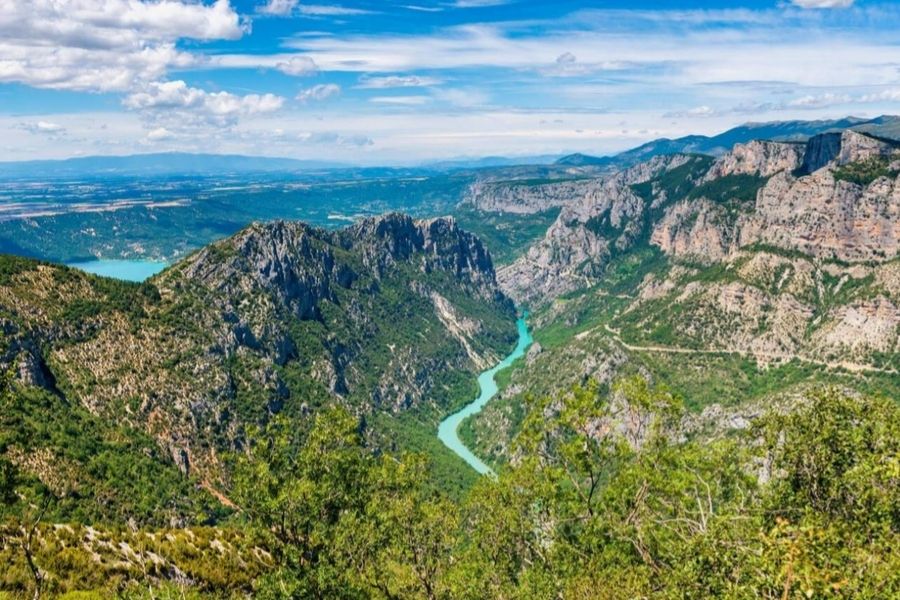
Accommodation prices drop, and I rarely wait in line. But weather can surprise you, and water sports aren’t always available.
Here’s a quick comparison:
| Season | Pros | Cons |
|---|---|---|
| Summer | All activities open, warm water | Crowds, higher prices |
| Spring/Autumn | Fewer tourists, great views | Some closures, cool water |
| Winter | Peaceful, empty trails | Most activities closed |
Personal Timing Tips
From my own trips, I’d say visit from late May to early July or in September. The weather is pleasant, most activities run, and it’s not as packed as July and August.
If you’re all about water adventures, midsummer is best—river’s high, rental shops open daily.
But if you, like me, love wandering quiet villages and hiking peaceful trails, late spring or early autumn hits the sweet spot between comfort and crowd size.
I always check the local forecast and water level updates before booking. In Provence, even a couple weeks’ difference can change your Verdon Gorge adventure.
How Water Levels Affect Adventure Activities
The first time I explored the Verdon Gorge, I realized water levels can totally make or break your day.
Whether I’m chasing wild rafting rides or just want a peaceful swim, knowing the river’s mood is key to planning.
Kayaking and Rafting Conditions
On my last trip, water levels changed everything for rafting and kayaking.
The Verdon River gets controlled by dam releases, and these decide which days you can actually get on the water. Usually, Tuesday and Friday are the big days—dams release enough water for those rafting thrills.
When the water’s high, I get fast rapids and tricky turns—so much fun.
But you have to check the schedule; on low-water days, rafting just isn’t an option.
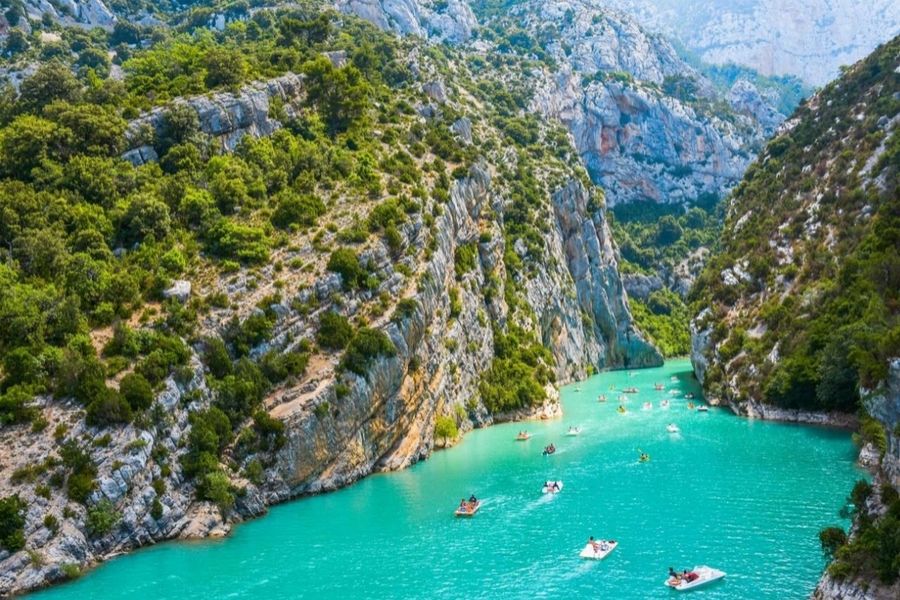
If you’re new to kayaking or have kids, July and August are better. The river slows down, so it’s calmer and beginner-friendly.
Here’s what I always check:
- Dam release days (usually online)
- My comfort with currents
- Whether I need to book in advance (it gets busy fast)
Impacts on Hiking Trails
High water levels don’t just mess with paddling—they change the hiking game, too.
After heavy rain or a dam release, some riverside trails get slick or even flood. Footbridges and low paths might go underwater, and those boulders by the bank? Super slippery.
Some of my favorite routes near the water need careful timing. I always wear sturdy shoes and check trail updates.
If the water’s low, I get to rock-hop and find hidden routes. But I keep an eye on wait times at narrow crossings, especially when summer crowds show up.
Swimming and Scenic Stops
Swimming in the Verdon Gorge is a must for me, but water levels change everything.
Early summer brings strong currents—sometimes too strong to swim safely.
Later in the summer, water drops and gentle, shallow banks pop up all along the gorge.
Lower water means more exposed scenic spots by giant boulders. I love tossing down my towel and just soaking up the view.
Sometimes, a rocky cove feels like my own private paradise.
I always read posted safety signs, since a sudden dam release can turn a calm spot risky in minutes.
Weather Patterns and What to Expect
During my trips to the Verdon Gorge, weather shaped every adventure. Warm summers brought crowds and bright days. Spring or autumn surprised me with cool breezes, sudden rain, or peaceful quiet on the trails and river.
Summertime Temperatures
When I went in June, midday temperatures hit 28–32°C (82–89°F). The heat felt strongest along the cliffs, especially in July and August—barely any shade out there.
The water stayed around 20°C (68°F), so swimming or paddling felt amazing.
Most activities—kayaking, canoeing, hiking—work best in summer because the weather stays stable.
Long, sunny days mean lots of time to explore, but you’ll notice more tourists and parking can be a pain.

If you’re visiting in peak summer, pack sun protection, a hat, and lots of water.
Weather Fluctuations in Spring and Autumn
I loved visiting in May and late September. Temperatures dropped to 15–24°C (59–75°F), but mornings sometimes felt chilly.
Rain popped up more often, especially in April and October, and the wind could kick up out of nowhere.
The weather changes fast—one minute blue skies, then clouds, then sun again.
The payoff? Fewer people around. Trails and viewpoints get quiet, and sometimes I feel like I have the gorge to myself.
Some water activities close if water levels get too high or cold, so I always check local updates before planning.
Preparing for Changing Conditions
Packing for the Verdon Gorge means being ready for weather surprises.
No matter the season, I bring a lightweight rain jacket, quick-drying clothes, and sturdy shoes with good grip.
In summer, I add strong sunscreen, sunglasses, and a reusable water bottle.
If you’re camping or starting early, expect big swings between morning and afternoon temps.
In spring or autumn, I layer up so I can adjust as the day warms or cools.
Local shops sometimes close outside peak months, so I grab snacks and supplies ahead of time.
Weather apps and tourism offices keep me in the loop and make travel in the Verdon Gorge way smoother.
Top Activities for Every Season
Verdon Gorge never runs out of adventure, no matter when you visit.
From hiking dramatic cliffs to paddling the river or spotting wildlife, there’s something for every nature lover and thrill-seeker.
Hiking Iconic Trails
Some of my best Verdon Gorge memories come from early spring and late autumn hikes.
The temps are mild, and I often find popular trails like Sentier Blanc-Martel nearly empty.
This trail hugs the gorge and gives you those classic turquoise river views that never get old.
In summer, the hikes stay gorgeous, but afternoons get hot.
I start early to catch the shade and cooler air.
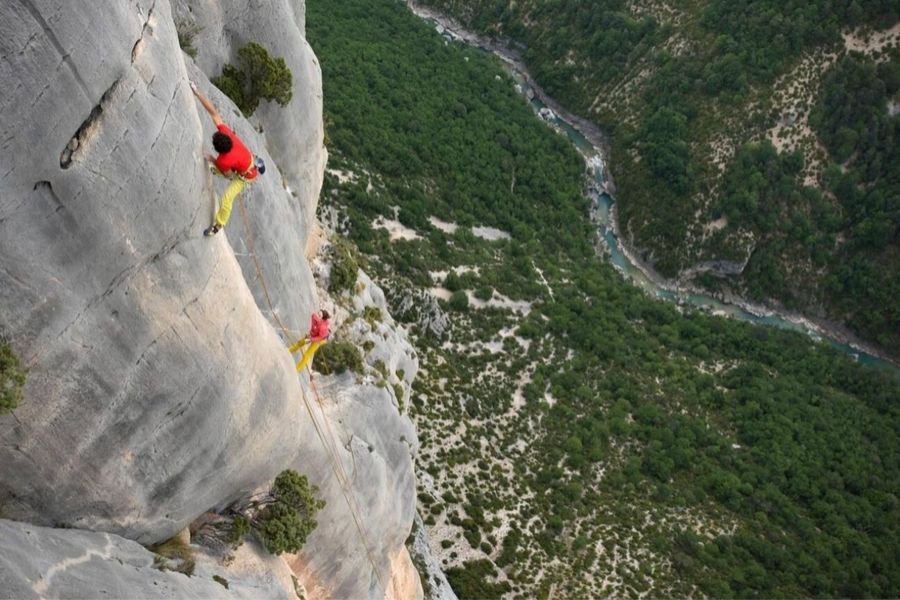
Winter brings a special stillness—sometimes snow dusts the pines, and higher paths stay empty except for animal tracks.
Some routes close or get risky with ice, so I always check trail conditions first.
My quick tip:
| Season | Trail Experience | Crowds |
|---|---|---|
| Spring/Fall | Best temps, great scenery | Low |
| Summer | Hot but lively, long days | High |
| Winter | Peaceful, limited access | Very Low |
Exploring by Boat or Kayak
The river and lakes at Verdon call to me from late spring to early autumn.
I love paddling narrow turquoise canyons in a kayak or on a paddleboard.
Early summer mornings often mean glassy, calm water—perfect for families or anyone new to this.
The electric boat rentals on Lac de Sainte-Croix are another fun way to find hidden coves.
If you’re up for a challenge, rafting is awesome in late spring when snowmelt raises the water.
The rapids pick up and it gets exciting fast.
Autumn feels quieter, the water cools, but the peace and mirror-like reflections on the river are something else.
Note: July and August get super busy. Boat and kayak rentals at main beaches (like Esparron-de-Verdon) can sell out by noon, so I always reserve or show up early.
Unforgettable Scenic Drives
Driving the rim roads of Verdon Gorge is something I never skip.
Each season brings its own special view.
In spring, wildflowers line the cliffs.
Summer turns the woods lush and green, and lookout points buzz with visitors.
The Routes des Crêtes (D23) gives me jaw-dropping panoramas at every turn.
Autumn lights up the forest with color and brings fewer tour buses.
If I’m there in winter, sometimes I have the roads almost to myself, the landscape frosted with snow and mist.
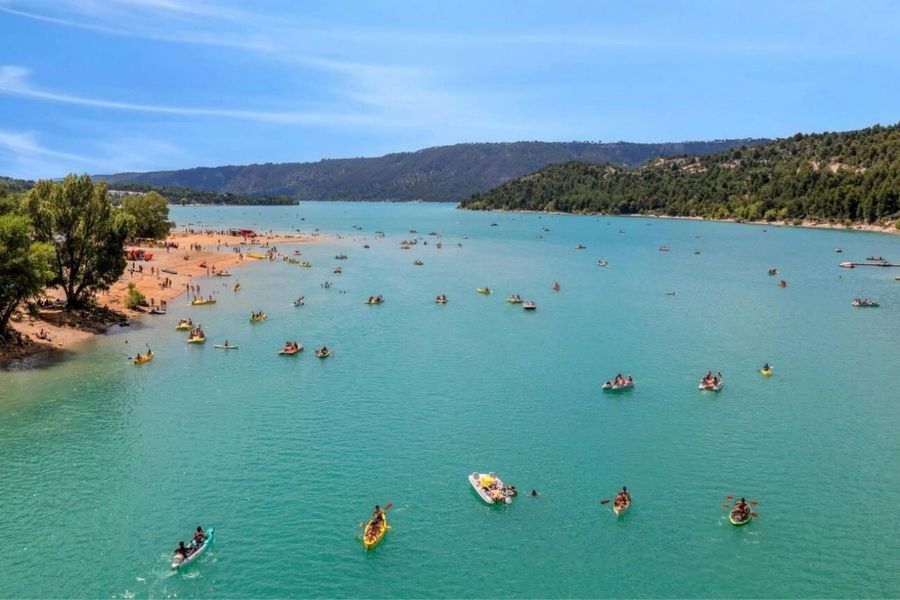
I always check for weather and road closures—icy patches can sneak up, especially in shady spots.
Scenic Drive Must-Sees:
- The Balcons de la Mescla viewpoint
- Pont de l’Artuby bridge
- Corniche Sublime and its tunnels
Wildlife and Nature Experiences
Verdon Gorge teems with wildlife all year.
In spring, I watch for Griffon vultures soaring above the cliffs—absolutely wild.
Early mornings are best for deer or shy boar near the forest edge.
Summer brings butterflies and the buzz of pollinators in wildflower meadows.
The forests and rocky slopes come alive in autumn, and I’ve spotted foxes darting across trails at dawn.
Winter stays quieter, but fresh snow reveals animal tracks everywhere.
If you’re into plants, the park has over 2,000 species, and wild lavender fields near the gorge bloom from June to July.
Quick nature checklist:
- Birds: Griffon vultures, eagles
- Mammals: Deer, wild boar, foxes
- Plants: Lavender (summer), pine, oaks
Exploring the wild side of Verdon always leaves me with a new story.
Navigating Crowds and Wait Times
The Verdon Gorge draws big crowds, especially in summer. I’ve noticed the roads get jammed, lookouts fill up fast, and you can end up waiting ages if you don’t plan ahead.
Honestly, a bit of smart planning and wandering off the main routes can totally transform your trip.
Best Strategies to Avoid Waiting
Mornings really are a game-changer. If I show up by 8:00 a.m., I can grab a parking spot right near the Gorge and wander the trails in peace.
Those early hours let me soak in places like Point Sublime and the sentier Blanc-Martel, and I barely see anyone else. It feels almost like I’ve got the whole place to myself.
Weekdays work out so much better than weekends in July and August. I always check for local holidays—French families love to travel then, and it gets even busier.
I bring my own snacks to skip the café lines at lunch. It’s a small thing, but it saves a lot of time.
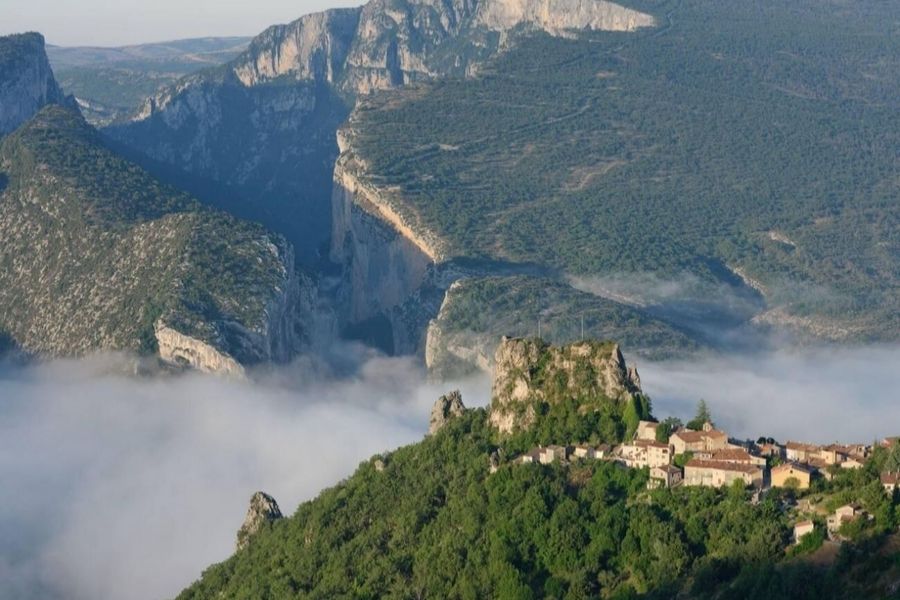
When I spot a line for canoe or kayak rentals, I just reserve online if I can, or I’ll choose a quieter launch spot. Oh, and here’s something I wish more people knew: The southern rim usually stays calmer than the busy northern rim, especially when it’s high season.
Hidden Gems Beyond the Main Routes
Most people rush to the famous viewpoints and packed sections. I prefer poking around side roads and paths that barely anyone uses.
Small villages like Rougon have peaceful walks and amazing views of the Gorge, far from the crowds. One afternoon, I wandered down to the western banks of Lac de Sainte-Croix—barely saw a soul, and there was loads of space to swim.
Here’s a table of spots I found much quieter:
| Hidden Spot | What you’ll find |
|---|---|
| Trigance village | Medieval charm & short hiking paths |
| Aiguines | Panoramic views and quiet cafés |
| Baudinard Gorges | Narrow, wild canyoning stretches |
| Palud-sur-Verdon | Access to little-traveled trails |
Taking detours helped me skip traffic and made the trip feel like a real adventure. Sometimes it’s just worth wandering away from the busy overlooks to get a more laid-back Verdon experience.
My Experience with Busy and Quiet Moments
Some days, I pulled into a packed parking lot and ended up waiting half an hour just for the shuttle to the Blanc-Martel trailhead.
I caught myself thinking, If only I’d dragged myself out of bed an hour earlier, I’d already be hiking.
Even at the viewpoints, crowds sometimes pressed in, everyone angling for that perfect shot.
But when I showed up on a quiet weekday morning or during the off-season, the Gorge felt almost empty.
I’d watch vultures glide from a silent overlook, just listening to the water rushing way down below.
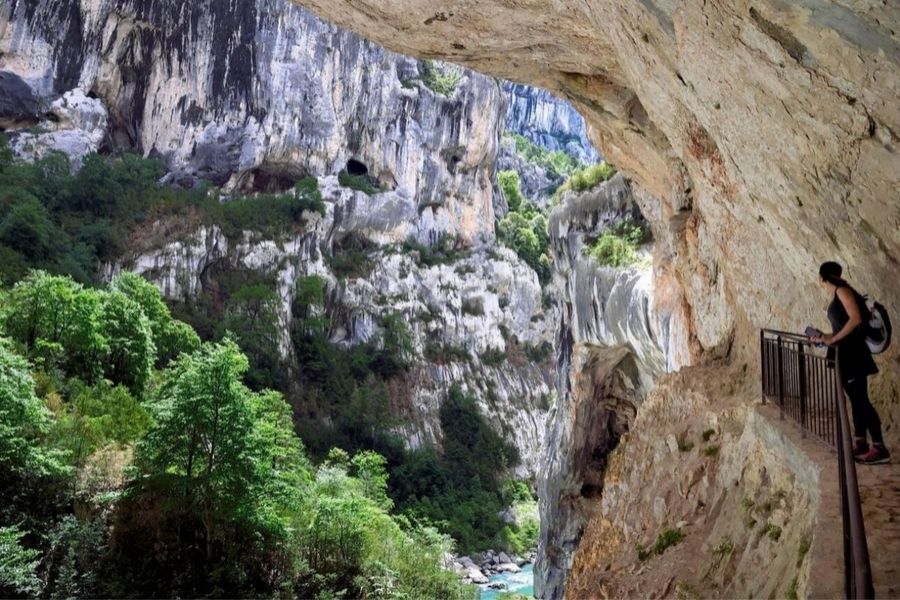
Honestly, those peaceful moments made the early alarm or detour feel totally worth it.
With a bit of planning, you really can dodge the crowds and soak up the best of the Verdon Gorge.

